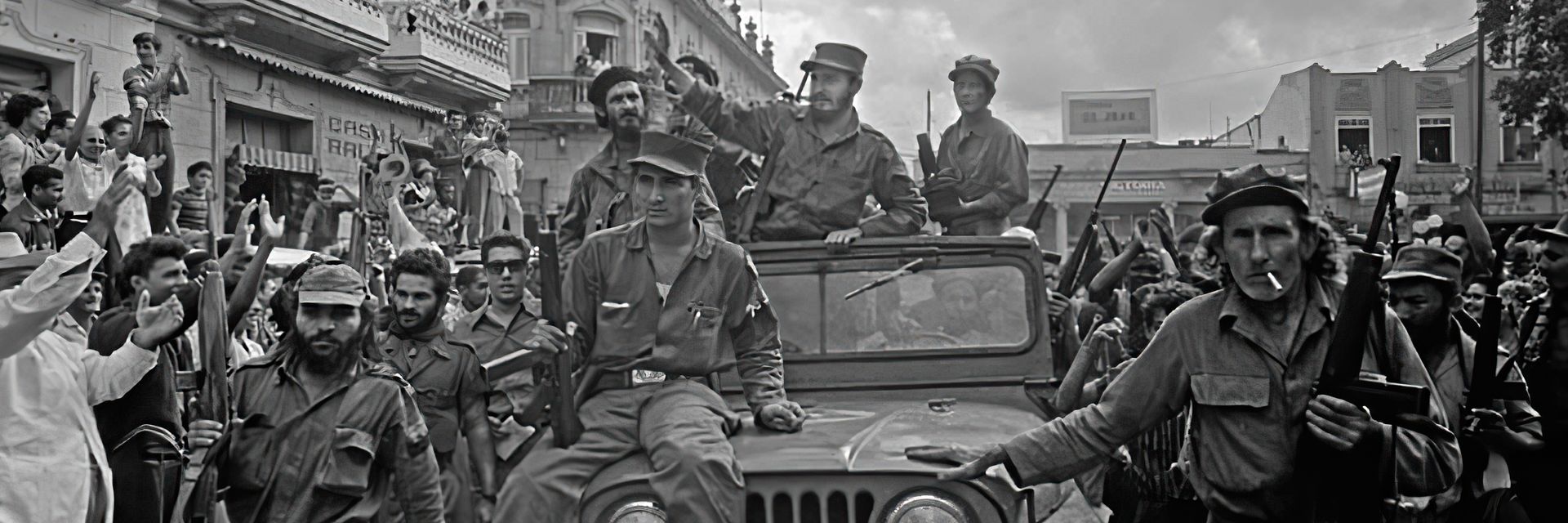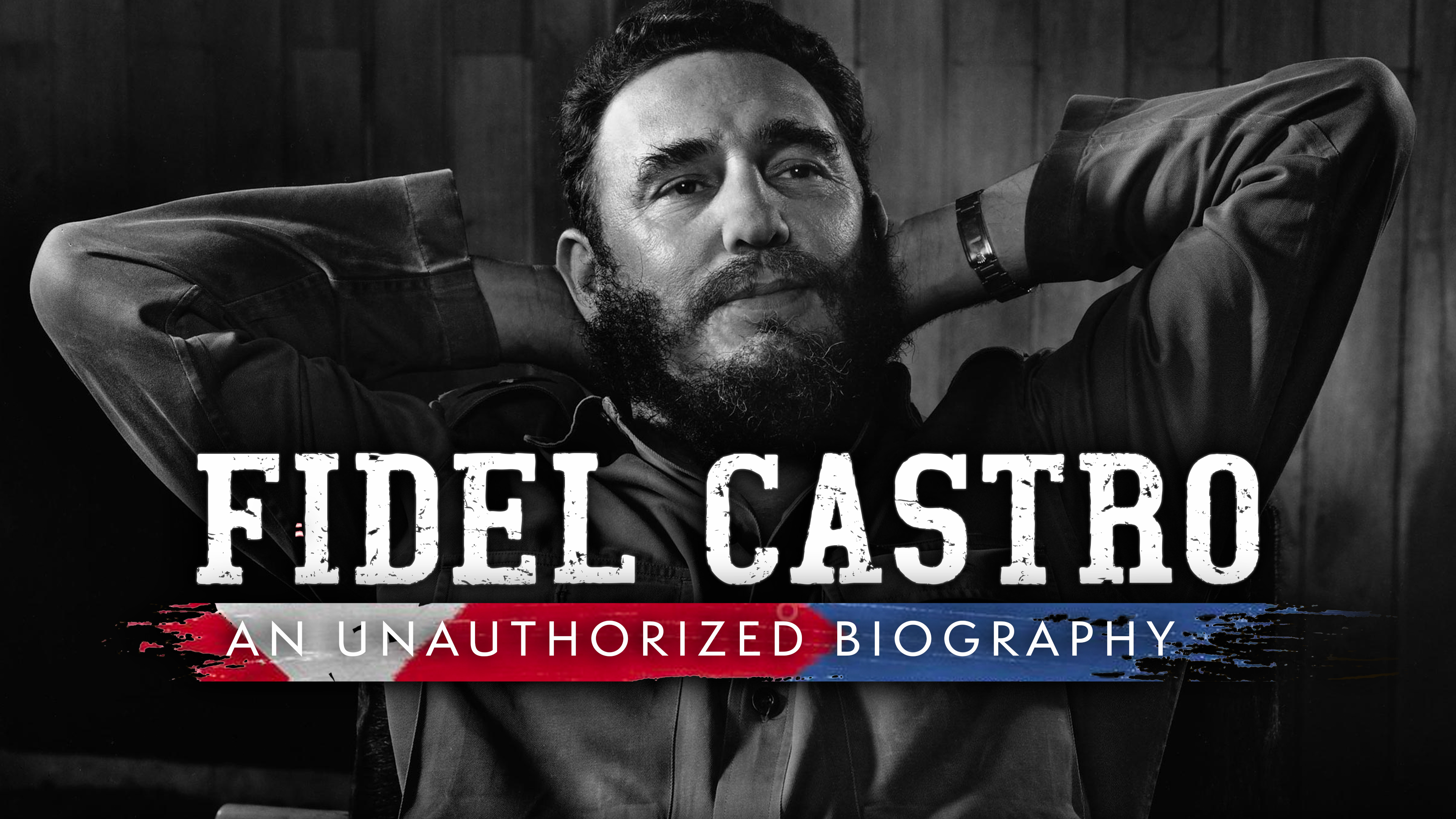Fidel Castro was born in rural Cuba, an illegitimate son of a wealthy plantation owner and his hired cook. As such, he was raised “in-between” his father’s ruling class and the working class of his mother. Being somewhat outside both classes made him painfully aware of the differences between them, and his later education reinforced these differences. Castro eventually developed a leadership style and a path that transformed Cuba and, arguably, changed the world.
◊
By the time Fidel Castro finally overthrew Cuba’s military dictator Fulgencio Batista in January 1959, the young revolutionary was already a veteran of two previous attempts to remove the country’s authoritarian leadership. Having been chased into Cuba’s mountainous jungles by Batista’s military, he spent two years regrouping and formulating his next strategy. The ultimate goal? Fomenting revolution to liberate the Cuban people from authoritarian oppression and to improve conditions for the island’s poorest.
For most observers without connections to the island nation, Cuba’s fiercely anti-colonialist “El Comandante” may seem almost a caricature, with his ever-present cigar, scraggly beard, and quasi-military attire sporting a distinctive flat-topped cap. For the people of Cuba, though, the reality has been more complex.
In the view of many who left in the Cuban diaspora between the late 1950s and the early 1980s, Castro was a single-minded dictator who ruled with an iron fist, impoverished his people, and punished dissidents mercilessly. But to his admirers, Castro was the heroic leader who freed Cuba from the decades-long influence of American colonialist oppressors. In the process, he lifted his people from abject poverty to a higher standard of living, provided universal education and eradicated illiteracy, and instituted free medical care for all from cradle to grave.
Could both of these polarized, seemingly unresolvable perspectives have elements of truth? Perhaps a look at Castro’s early years – and early influences – will provide a window into the personal development of one of the 20th century’s most complex leaders.
Caught Between Classes: Castro’s Privileged – and Underprivileged – Childhood
Fidel Castro was born a bastard. And that accident of birth proved to be a significant, not to say auspicious, factor in the evolution of his worldview.
Fidel’s father immigrated to Cuba after the Spanish-American War of 1898, in which he had served in Spain’s military. Soon Ángel Castro became a wealthy plantation owner, supplying sugar cane for the infamous United Fruit Company, an American firm with tentacles throughout Latin America. As a member of the burgeoning bourgeoisie, Castro père enjoyed his exclusive lifestyle and the wealthy friends who came with it.
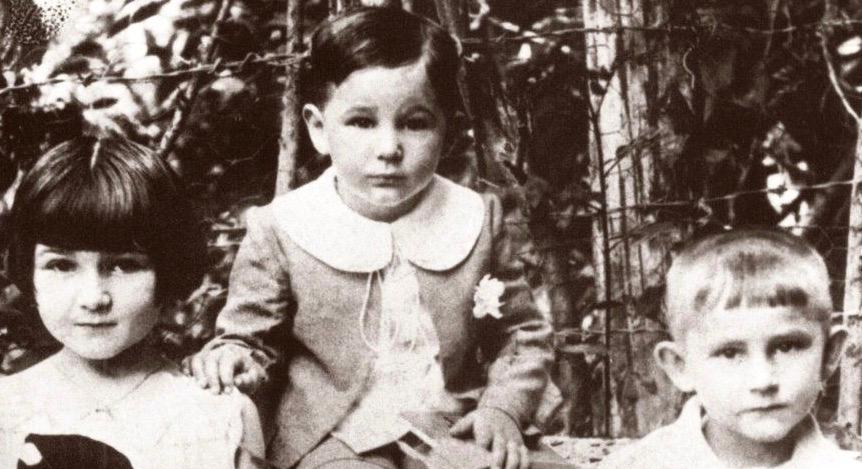
Fidel Castro (center) poses with two of his siblings, Angelita and Ramón, in this 1929 photo. (Source: FidelCastro.cu)
He also was responsible for a large brood of offspring by three women: his wife, Maria; a young employee in his household, Lina Ruz Vasquez; and even a field worker named Generosa. Maria bore five children, then Lina gave birth to seven. (Generosa had a son, Martin.) After Lina’s third child, Fidel Alejandro Castro Ruz, was born out of wedlock in 1926, Ángel divorced Maria and married Lina. She then had four more children, including Fidel’s trusted younger brother Raúl.
So, in a very real sense, Fidel was born “between” classes, fitting neither into his father’s landowner class nor exactly into the working class of his mother. He was raised alongside the other children of Ángel, who were born into wealth and privilege, but he was not perceived as equal to them.
The inherent conflicts of such a childhood profoundly affected Fidel, who, as an adult, cited his upbringing as foundational to his early worldview. He believed that growing up among the children of the plantation’s farmhands “prevented” him from accepting bourgeois culture, allowing him to critique it, while simultaneously benefiting from certain of its advantages.
A Jesuit Education and the Impact of Hispanidad on Young Fidel
After being educated first by tutors, and being baptized as a Catholic at age 8, Fidel was sent to a Jesuit-run boarding school for the remainder of his primary and secondary education. As a student he was unexceptional, preferring sports to the rigor of academics, but some of Castro’s Jesuit education sunk in and stayed with him into his public life. Jesuits, also known as the Society of Jesus, have a military-like structure and mission to serve anywhere in the world as required. Its adherents see themselves as “soldiers of God.”
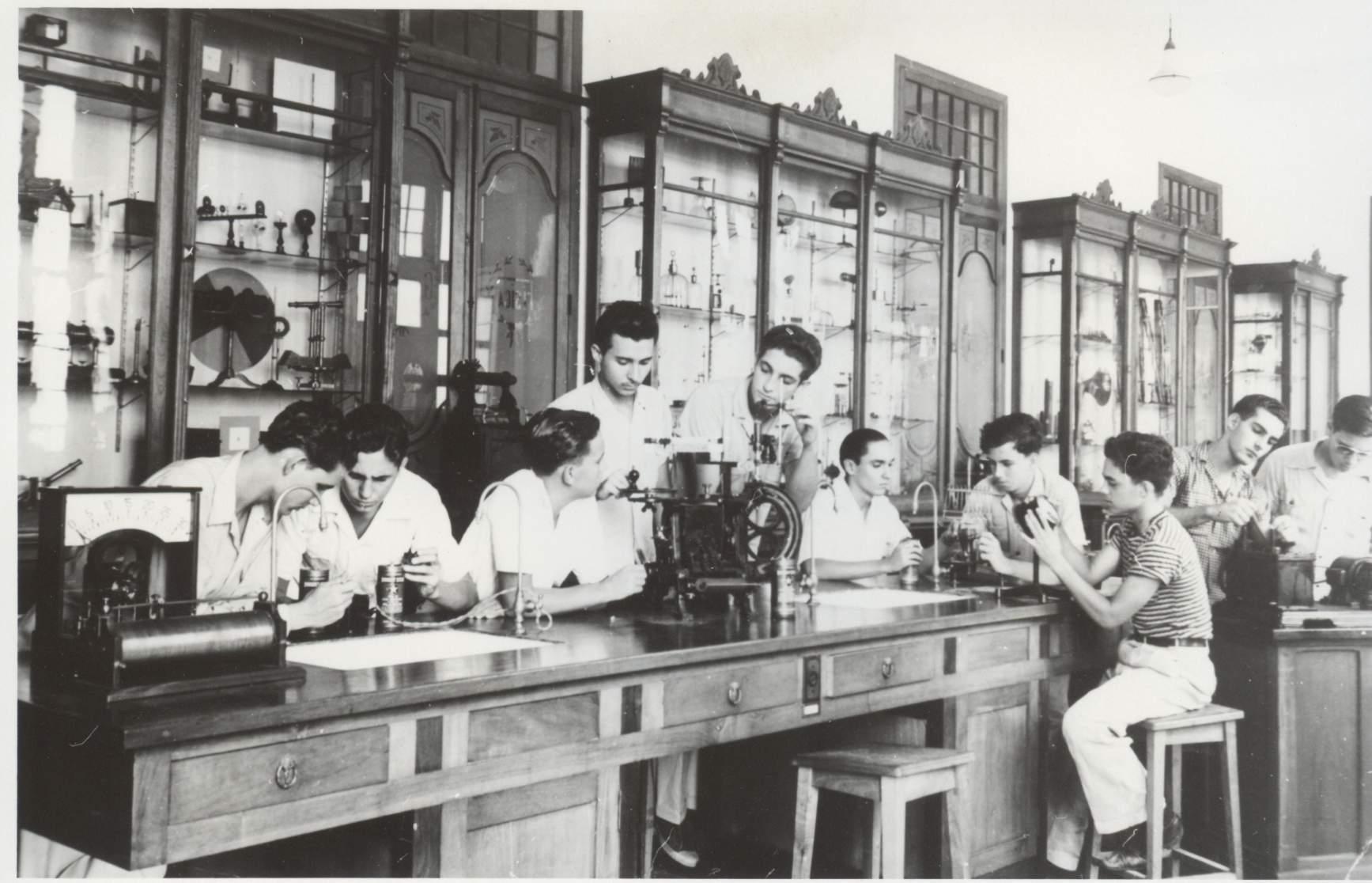
Fidel Castro (second from left) poses with classmates at the Belén preparatory school. (Image Credit: Wikimedia)
At 19, Castro entered the Belèn private Jesuit preparatory school in Havana. Around the same time, he began searching for his life’s path. Feeling alienated from his father’s wealth, Castro was inspired by the story of his paternal grandfather, a poor, proud Spanish laborer. He found solace in connecting with the “proletarian” history of earlier generations of his family.
Castro revealed that his Jesuit education at Belèn was “very dogmatic,” and stated that the Jesuits “influenced me with their strict organization, their discipline and their values. . . . They influenced my sense of justice.”
Castro was also profoundly moved by his prep school lessons in the philosophy of Hispanidad. The faculty of Belèn were virtually all of Spanish heritage, and they were as proud of their Spanish cultural history as of their Catholic calling. Hispanidad holds that the Spanish way of life, as practiced both in the Old World and, more recently, in the New embodies superior values to those of the Anglo-Saxon world. This became especially important in the aftermath of the Spanish-American war, when the U.S. became much more active in developing business interests in Cuba. The resulting import of American colonial and capitalistic practices into the less developed Caribbean nation caused bitter resentment among many Cubans.
Castro himself was ambivalent about the conflict he perceived between the democratic history of the United States and what he viewed as its imperial ambitions. Castro held an intense admiration for several American leaders, including Abraham Lincoln, whom he viewed as the great liberator of oppressed African American slaves. He also respected Franklin Roosevelt, whom he revered for programs that uplifted the American working class. But Castro had a keen eye for American hypocrisy, which he believed gave only lip service to democracy while turning a blind eye to the plight of workers on the American-owned plantations in Cuba.
At school, young Fidel developed a rebellious attitude against injustice. And virtually everywhere he looked in his native land, there was plenty of evidence of that. For this reason, upon graduating from Belèn, Castro chose to enter the law program at the University of Havana, preparing for a career representing the disadvantaged through the Cuban legal system.
The Radical Transformation of Fidel Castro
By all accounts, Fidel was transformed by his experiences at university. He connected with an activist group of students who were highly motivated to protest against the elitist powers that ruled the country in an authoritarian manner. He was praised for his skill as an orator, giving fiery speeches and impressing his peers with his charisma. Importantly, Castro was introduced to Karl Marx’s writing during this period. While he did not immediately identify himself as a socialist or a Marxist, these writings impressed and influenced him.
Castro's first marriage was a study in class conflict. His wife Marta, daughter of a wealthy attorney for the United Fruit Company, loved visiting Cuba's exclusive American community, infuriating Fidel. But that didn't stop him from accepting her father’s honeymoon gift of an expensive trip to New York City.
Castro was now on his way to being fully radicalized. Following his graduation from university in 1950, he served as a lawyer for the indigent. But it wasn’t long until he felt attracted to government service. In 1952, Castro decided to run for a seat as a representative in the lower chamber of the country’s National Assembly. However, Fulgencio Batista’s treacherous overthrow of Cuba’s legitimate government put an end to that plan.
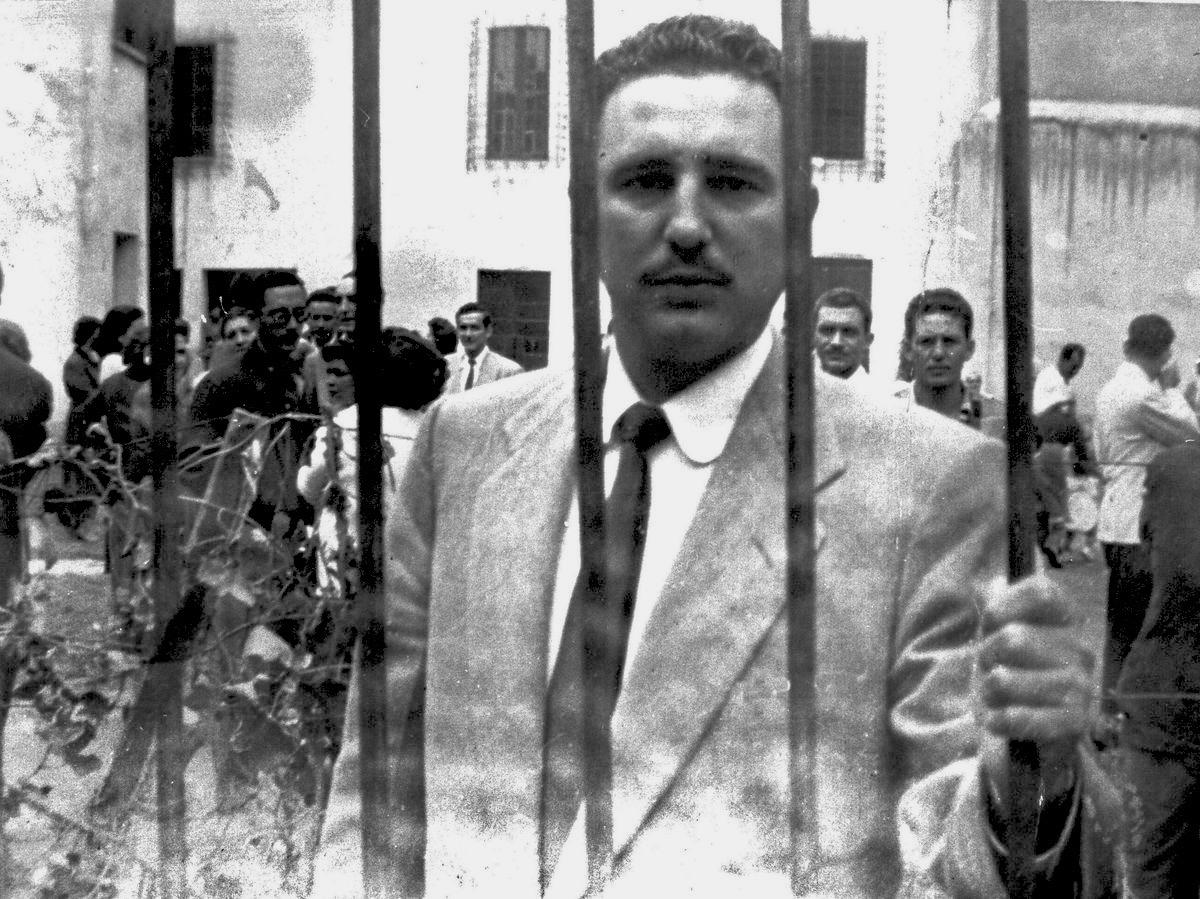
Castro was radicalized by his experiences as a university student and as a lawyer for the indigent at the beginning of his professional career. (Source: Cuban government, via Chicago Tribune)
It was a turning point for Castro. Though his aspirations for a seat in the National Assembly were in shambles, he pledged he would work tirelessly to overthrow Batista through whatever means necessary. It was the beginning of Fidel's transformation from radical activist to revolutionary.
Fidel as Freedom Fighter – the Campaign against the Dictator Batista
At first, Castro fought Batista through the Cuban court system, filing lawsuits challenging Batista’s right to rule. But Batista quashed Castro’s hopes by leaning on the judiciary to throw all of Castro’s legal maneuvers out of court. Faced with these setbacks, he turned to another Cuban hero for inspiration: José Martí, who liberated his country from Spanish rulers in the late 19th century. Deciding to challenge Batista by force, Castro schemed to organize his comrades into a militia capable of defeating the military junta.
The first armed action, in 1953, an attack on the Moncada Barracks in search of weapons, ended in costly defeat. It was detected in advance, and scores of his followers were killed or captured. Castro escaped, but he submitted to arrest soon after. Two years later, Batista, believing Castro was no longer a threat, pardoned him and others among his comrades.
Castro’s second major attack was equally ill-fated. In November 1956, he and his comrades surreptitiously took a boat from Mexico to Cuba to launch an armed invasion at Los Cayuelos. They set ashore on December 2. But Batista’s forces had been forewarned and met the boat with a fusillade of bullets, decimating Castro’s people. Nineteen surviving members of the ragtag incursionary team escaped to the mountains, hiding in true guerrilla style and plotting to topple Batista. The dictator responded to the attack by declaring martial law and shutting down newspapers that dared to dissent.
Castro’s Forces Turn the Tide Against Batista
Despite these inauspicious failures, Castro gradually gained more followers and benefited from the reactions of ordinary Cubans to Batista’s authoritarian rule. Fidel’s cohorts now included hundreds of troops, along with his Argentinian compadre Che Guevara, who had become close with the Castro brothers while they were all hiding out in Mexico prior to the attempted Los Cayuelos invasion.
Fidel divided his followers into three military-style columns, and they began scoring victories against Batista’s forces in small towns along the journey from the mountains toward Havana. Fidel led one column, and Raúl and Che led the others.
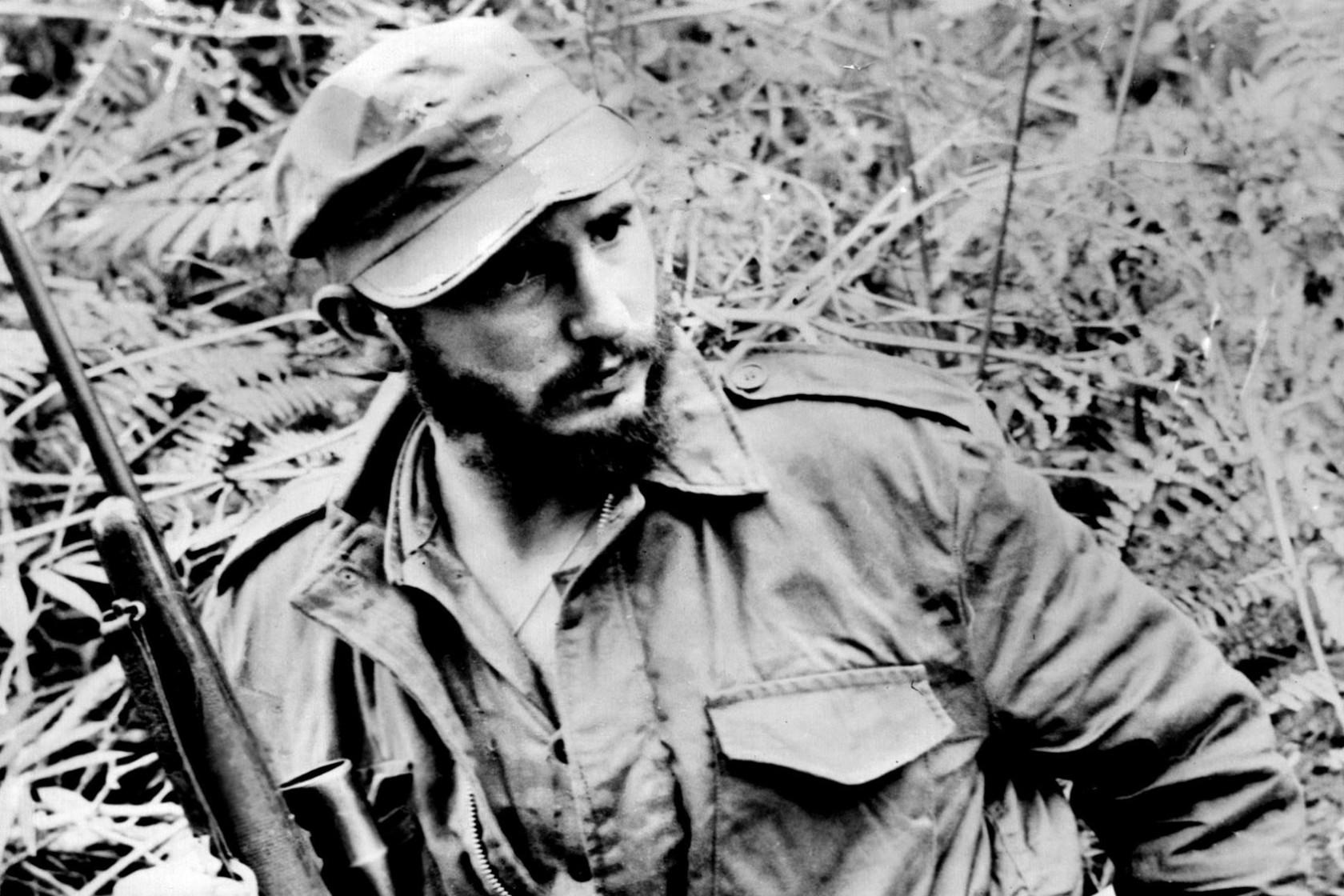
In 1958, Castro and his armed militia hid in the jungles of Cuba, regrouping and planning their assault on the Batista regime. (Credit: Unattributed photo received in 1958 by The Los Angeles Times, via Revista de Prensa)
As the rebel army closed in on Havana, Batista finally saw the writing on the wall. Sensing defeat, he turned over the government to his army commander in chief Eulogio Cantillo. Then the erstwhile dictator fled to a protected exile in the nearby Dominican Republic. He carried with him around $300,000 (about $2.7 million today) of “traveling money,” in both American and Cuban currency.
Batista’s rapid retreat sent the country into chaos. Raúl Castro’s column joined up with Guevara’s and entered Havana on January 2, 1959. Fidel, who would join them in a matter of days, sensed a glorious future and used his victory as a stimulus to dream big. He made plans for government reforms that he believed would rival his idol Franklin Roosevelt’s New Deal.
Martí to Marx: Castro’s Influences, and His Legacy
Young Fidel Castro drew valuable lessons from his many influences, ranging from a Jesuit education through the heroic example of Abraham Lincoln to the political and economic philosophy of Karl Marx. They laid the foundation for his sense of social morality as well as his personal ethics, which would guide him in public life.
By January 1959, he had been living in the humid jungle for two years and leading a revolution that would upend the class structure of his country and make Cuba a key player in Latin America. But in some ways, Fidel was still the boy who grew up benefiting from his father’s wealth yet remaining indifferent toward it.
When he entered Havana, Castro’s choice of residence was the ritziest spot in the city – the Hilton Hotel penthouse suite. He commandeered it for his home and base of operations. Tromping around the suite in his fatigues and boots, Fidel was finally in his element, a revolutionary at the apex of his country’s wealth . . . and power.
Ω
Kevin Martin is Senior Writer for MagellanTV. He writes on a wide variety of topics, including outer space, the fine arts, and modern history. He has had a long career as a journalist and communications specialist with both nonprofit and for-profit organizations. He resides in Glendale, California.
Title image: Flickr)
